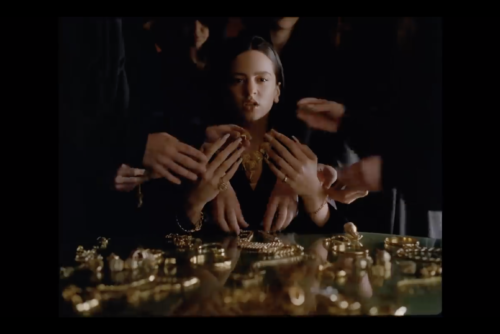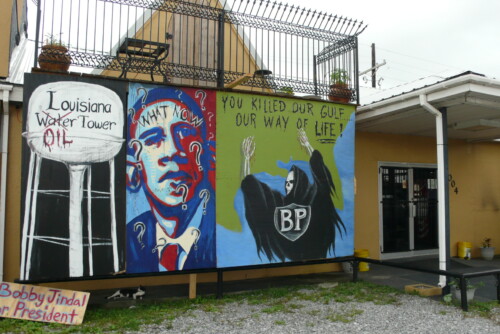Mourning and Militancy Revisited
My oral history project was inspired by the conviction that it is important to remember activism in order to plan for the future, and I was concerned by how quickly the record of AIDS activism was being lost only a decade later, despite an impressive amount of documentation left by the rich forms of cultural activism that have been central to ACT UP. If the AIDS activist movement that I had been a part of could be so ephemeral, I wondered what I didn’t know about previous generations of activism. How might the effects of activism continue even when more visible movements end? Oral history made it possible to address this question, since I could ask AIDS activists about how their lives had continued to be affected even after their involvement with ACT UP in order to trace the ongoing legacy of their activism.
As a vivid example of how trauma can be addressed by collective and public cultural formations, activism also contributed to my larger project of developing approaches to trauma that don’t medicalize or pathologize it. My efforts to wrest authority over trauma discourses away from clinical psychology have been partly informed by the example of the history of sexuality. No longer considered a disease to be cured, homosexuality and other non-normative sexualities have been resituated as a resource for the construction of cultures and publics. Similarly, the experience of trauma, rather than marking people as abnormal, can be understood as a foundation for the construction of new identities and communities.
As part of my aim of showing how queer approaches to loss and trauma are instructive for thinking about trauma more generally, I want to focus on how queer or gay and lesbian responses to the AIDS crisis have transformed practices of mourning and brought them within the orbit of activism, and I want to suggest the implications of this nexus of mourning and militancy for oral histories of activism. One of the hardships faced by gay men in the 1980s was the lack of public attention to the deaths and losses of AIDS because of the homophobic dismissal of those who were not seen as innocent or average citizens. Traditional forms of mourning were often denied, compounding the trauma of loss, or funerals kept the dead closeted, erasing the grief of lovers and friends. Yet, gay communities also reinvented rituals of mourning, producing new forms of public funerals that incorporated sexuality and camp. Public funerals have also provided occasions for merging activism with mourning as evident in the following remarks by David Wojnarowicz, the visual artist who died in 1992:
I worry that friends will slowly become professional pallbearers, waiting for each death, of their lovers, friends and neighbors, and polishing their funeral speeches; perfecting their rituals of death rather than a relatively simple ritual of life such as screaming in the streets. I worry because of the urgency of the situation, because of seeing death coming in from the edges of abstraction where those with the luxury of time have cast it. I imagine what it would be like if friends had a demonstration each time a lover or a friend or a stranger died of AIDS. I imagine what it would be like if, each time a lover, friend or stranger died of this disease, their friends, lovers or neighbors would take the dead body and drive with it in a car a hundred miles an hour to washington d.c. and blast through the gates of the white house and come to a screeching halt before the entrance and dump their lifeless form on the front steps. It would be comforting to see those friends, neighbors, lovers and strangers mark time and place and history in such a public way. (122)
Wojnarowicz insists on the need to go public with feelings and to turn mourning into militancy. And in fact his vision was realized in a number of public funerals sponsored by AIDS activists, including the 1992 Ashes Action in which ACT UP marched to Washington and threw the ashes of loved ones onto the grounds of the White House. (DIVA-TV’s Ashes Action 1992 [1996], a video about this demonstration, is available in the Royal S. Marks AIDS Activist Video Collection at the New York Public Library.)
Writing in the midst of the AIDS crisis in 1989, AIDS activist and cultural critic Douglas Crimp raised an additional problem about the nexus of mourning and militancy, suggesting that militancy might actually displace and suppress mourning, warding off the intransigence of loss by offering a vision of social change:
Frustration, anger, rage, and outrage, anxiety, fear, and terror, shame and guilt, sadness and despair – it is not surprising that we feel these things; what is surprising is that we often don’t. For those who feel only a deadening numbness or constant depression, militant rage may well be unimaginable, as again it might be for those who are paralyzed with fear, filled with remorse, or overcome with guilt. To decry these responses – our own form of moralism – is to deny the extent of the violence we have all endured. (“Mourning and Militancy,” 16)
Crimp’s comments offer an important reminder of the limits of activism for addressing trauma and of the complexity of psychic responses to trauma. They have become even more relevant over time, as former AIDS activists reflect on their past. 1 I was especially inspired in my project by the comments of Jean Carlomusto in Gregg Bordowitz’s video, Fast Trip, Long Drop (1993), in which Bordowitz explores his developing resistance to being the positive image of the HIV+ person surviving and thriving with AIDS. Carlomusto mentions that the footage of those who were activists has now become a site of mourning because so many people depicted in them are dead. This comment became the inspiration for my desire to understand how people might remember activism after the fact and how mourning might complicate both activism and memories of it. In exploring this emotionally fraught terrain with those I was interviewing, I was also alert to the possible limits of oral history and testimony for capturing emotional experience.
- For Crimp’s own reflections on the past, see Melancholia and Moralism, especially the title essay.[↑]



